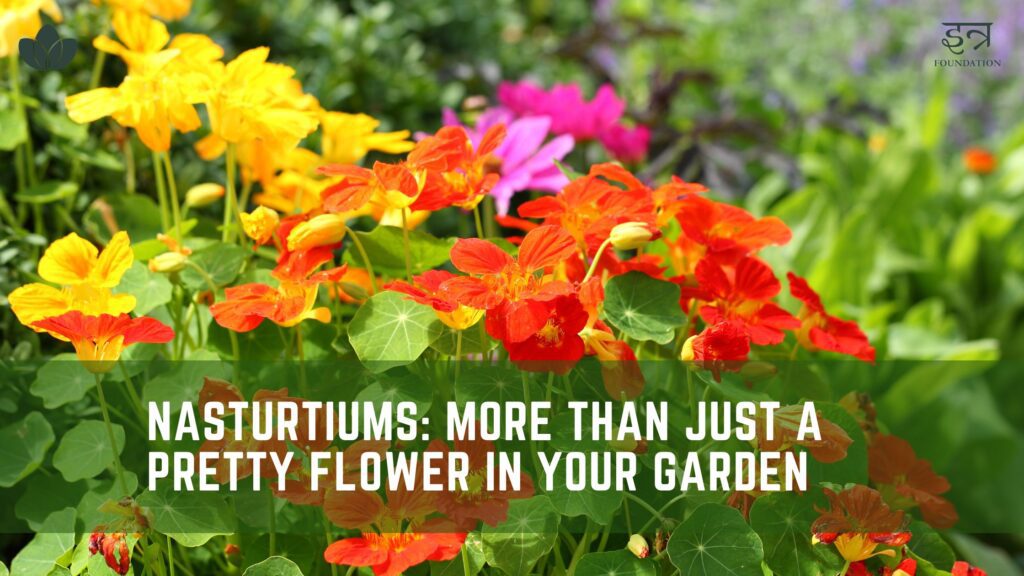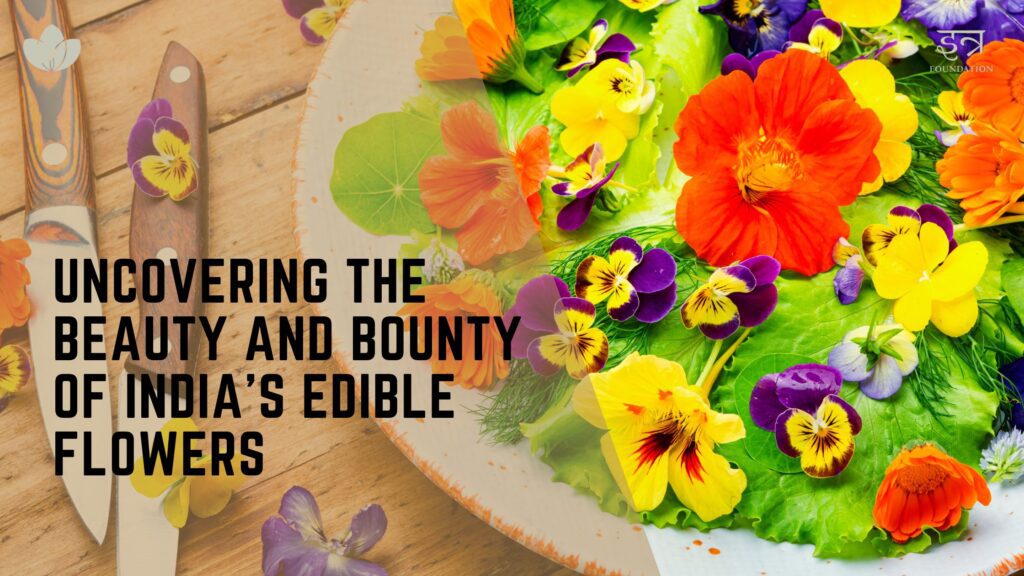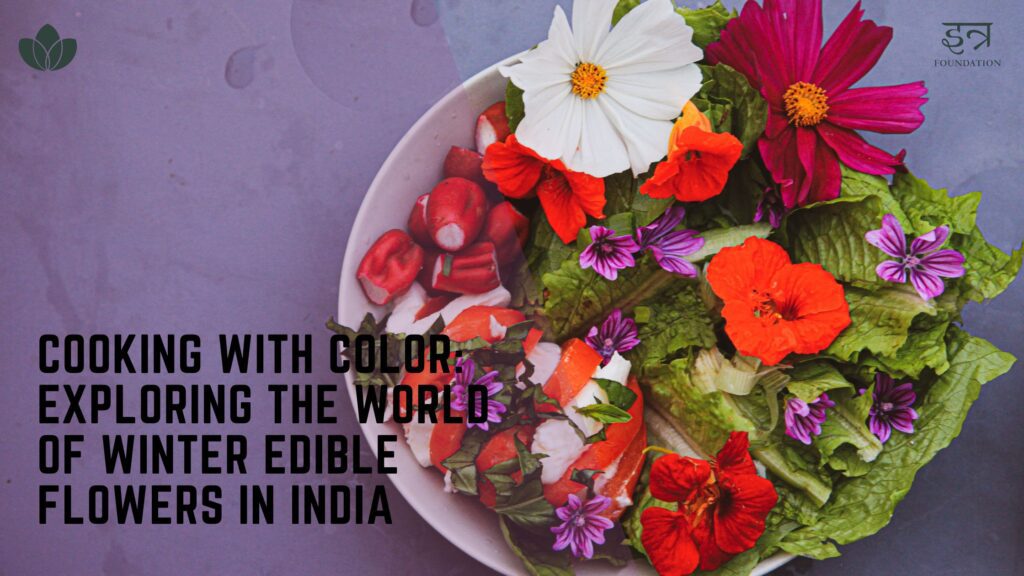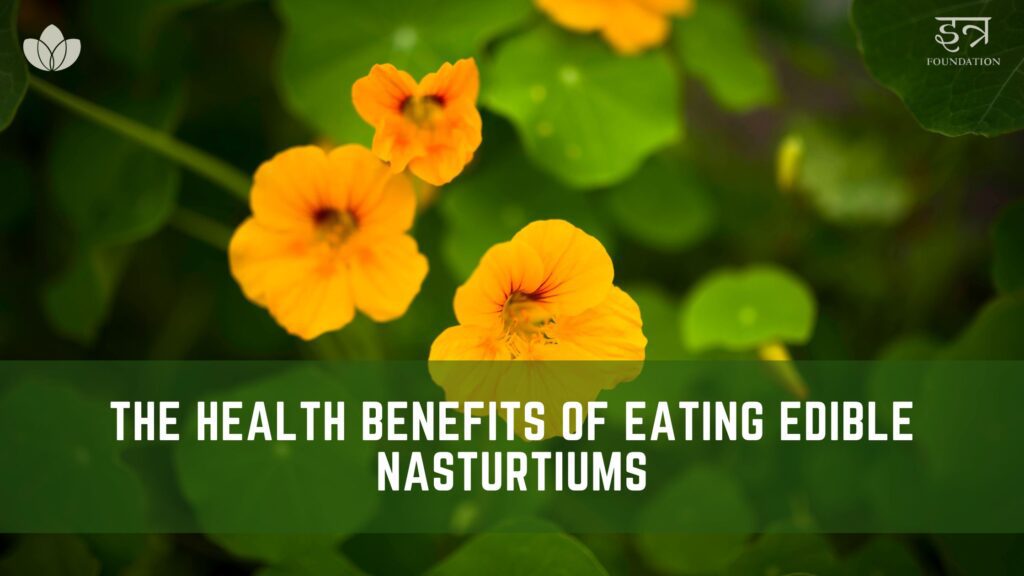Nasturtiums are versatile and edible flowers that can be used in a variety of dishes. These bright and colorful flowers have a slightly peppery taste, making them a unique addition to any recipe. In this article, we will explore 10 unbelievable ways to cook with nasturtiums. From savory to sweet, there are endless possibilities to incorporate this beautiful flower into your meals. So, let’s dive in and discover the many ways to use nasturtiums in your cooking.
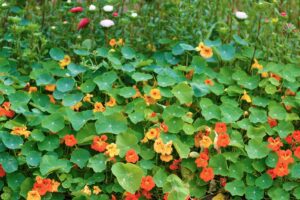
Nasturtiums in Salads
Nasturtiums are versatile edible flowers that can add both flavor and color to a variety of dishes, including salads. The flowers have a peppery flavor, similar to watercress, that can provide a zesty kick to a salad. They also come in a range of colors, from bright orange to deep red, that can add visual interest to a dish. To incorporate nasturtiums into a salad, they can be simply torn into small pieces and scattered over the top of the greens. Alternatively, the flowers and leaves can be chopped and mixed into the salad dressing for an even distribution of flavor. There are many unique salad recipes that feature nasturtiums, such as a strawberry and nasturtium salad with balsamic dressing or a cucumber and nasturtium salad with yogurt dressing. These salads not only showcase the unique flavor and color of nasturtiums but also offer a refreshing and healthy meal option.
How Nasturtiums can add flavor and color to salads
- Add a pop of color: Nasturtiums come in a range of colors, including yellow, orange and red. These bright hues can add vibrancy and visual interest to a salad.
- Introduce a peppery flavor: Nasturtiums have a slightly spicy and peppery taste, which can add a unique flavor dimension to a salad.
- Incorporate both the leaves and flowers: Both the leaves and flowers of the nasturtium plant are edible and can be used in salads.
- Create a balanced salad: By adding nasturtiums to your salad, you can balance out other flavors and textures. For example, the peppery taste of nasturtiums can complement sweeter ingredients like fruit or honey dressing.
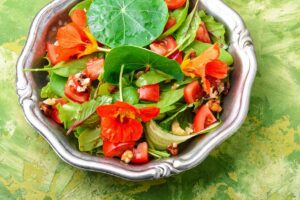
Some unique salad recipes that feature Nasturtiums
- Nasturtium and Radish Salad: This salad combines the peppery taste of nasturtiums with the crisp crunch of radishes, creating a refreshing and zesty dish.
- Nasturtium, Orange, and Fennel Salad: This salad features a mix of sweet and savory flavors, with the spiciness of the nasturtiums complementing the sweetness of oranges and the licorice-like taste of fennel.
- Nasturtium and Cucumber Salad: This salad highlights the cooling properties of cucumbers and the spiciness of nasturtiums, making it a refreshing and flavorful side dish.
Nasturtiums in Beverages
- Nasturtiums can add a refreshing, slightly peppery flavor to beverages, making them a great addition to cocktails and teas.
- To make a nasturtium-infused cocktail, start by making a simple syrup infused with nasturtium flowers and leaves. Combine equal parts sugar and water in a saucepan, bring to a simmer and stir until the sugar dissolves. Add in a handful of nasturtium flowers and leaves, remove from heat and let steep for 10-15 minutes. Strain out the solids and use the syrup to sweeten your favorite cocktail recipe.
- Another way to use nasturtiums in cocktails is to muddle the flowers and leaves with other ingredients like lemon, lime, and mint. This will release their natural oils and flavors, infusing the drink with a bright, herbaceous taste.
- For a non-alcoholic option, try making a nasturtium tea. Steep a handful of fresh nasturtium flowers and leaves in hot water for 5-10 minutes. Strain out the solids and sweeten with honey or agave if desired. This tea can be served hot or iced for a refreshing summer drink.
- Nasturtiums can also be used to flavor other types of beverages, such as lemonade or sparkling water. Simply add a few leaves and flowers to the pitcher or glass for a pop of color and flavor.
In India, nasturtiums are not commonly used in beverages but they can be a unique addition to local drinks. Nasturtiums have a slightly peppery flavor that can add a subtle kick to cocktails and teas. To make a nasturtium-infused cocktail, muddle a few nasturtia leaves with lime juice, simple syrup and your choice of spirit. Then, top with sparkling water or soda and garnish with a nasturtium flower. For a non-alcoholic option, you can make a nasturtium tea by steeping nasturtium leaves and flowers in hot water for a few minutes, then adding honey or other sweeteners to taste. This tea can be enjoyed hot or cold and can be a refreshing way to incorporate nasturtiums into your diet.
Nasturtiums in Soups and Stews
Nasturtiums are not only a colorful addition to salads and beverages but also a unique ingredient to add to soups and stews. Their subtle peppery flavor can complement a variety of dishes, while their vibrant colors add a pop of brightness to any meal. Nasturtium leaves and flowers can be added to soups and stews to enhance their flavor and texture, and can even serve as a substitute for watercress. Some delicious nasturtium-based soup and stew recipes include creamy nasturtium soup, spicy squash and nasturtium soup and hearty lamb and nasturtium stew. These recipes are a great way to incorporate this versatile ingredient into your diet and impress your taste buds with its unique flavor.
In Indian Cooking: The peppery, slightly sweet taste of nasturtiums pairs well with the spicy, aromatic flavors of Indian cuisine. Try adding nasturtium leaves and flowers to lentil soups or vegetable stews for a pop of color and flavor. You can also use nasturtiums to make chutneys, adding a unique twist to this classic Indian condiment. For a refreshing drink, try infusing nasturtium leaves and flowers in iced tea or lemonade. Get creative with the use of nasturtiums in your Indian cooking and discover new flavors and textures in your favorite dishes!
Nasturtiums in Sauces and Condiments
Nasturtiums can add a unique and spicy flavor to various sauces and condiments in Indian cuisine. The leaves and petals of nasturtiums can be used to create a delicious pesto, which can be used as a dip or spread for sandwiches and wraps. The bright yellow and orange nasturtium flowers can be infused with vinegar to make a tangy and flavorful dressing for salads or marinades. Nasturtiums can also be used to create chutneys by combining their leaves, stems and flowers with spices such as cumin and coriander. These sauces and condiments not only add a burst of flavor to any dish but also provide the added health benefits of nasturtiums.

Nasturtiums in Main Dishes
Nasturtiums are versatile and edible flowers that can be added to a wide range of main dishes to provide a unique flavor and visual appeal. In Indian cuisine, nasturtiums can be used in dishes such as curries, biryanis and lentil soups. For example, nasturtium leaves can be finely chopped and added to a spicy vegetable curry to add a fresh, peppery flavor. Nasturtium flowers can also be used to top dishes such as pulao or biryani, adding a pop of color and subtle flavor. In addition, nasturtiums can be used to create main dishes such as nasturtium risotto, nasturtium pasta and nasturtium frittata. These dishes combine the unique flavor of nasturtiums with other complementary ingredients to create a delicious and visually stunning meal.
Nasturtiums in Desserts
Nasturtiums can be used to add a unique flavor and vibrant color to desserts. The flowers can be infused into various desserts such as sorbets, ice creams and cakes. Here are some pointers on how nasturtiums can be incorporated into desserts:
- Nasturtium Sorbet: Infused with a delicate, slightly peppery flavor, nasturtiums can be used to make a refreshing sorbet. The sorbet can be made with a simple syrup infused with nasturtiums and lemon juice.
- Nasturtium Shortbread Cookies: Nasturtium petals can be finely chopped and added to shortbread cookie dough, giving the cookies a subtle spicy kick. The cookies can be served with a dusting of powdered sugar and a garnish of fresh nasturtium flowers.
These are just a couple of ways to incorporate nasturtiums into desserts. The versatility of these edible flowers allows for endless experimentation in the kitchen.
Nasturtiums in Garnishes
Nasturtiums can be used as an edible garnish to add a pop of color and flavor to dishes. The vibrant flowers and leaves of nasturtiums make them a great choice for garnishing salads, soups, and main dishes. Here are some creative ideas for using nasturtiums as a garnish in Indian cuisine:
- Use nasturtium flowers to decorate the top of a curry dish or soup. The bright orange and yellow flowers will add a beautiful contrast to the rich colors of the dish.
- Add a few nasturtia leaves to the top of a chaat dish for a peppery, fresh flavor.
- Use nasturtium flowers and leaves to create a beautiful and colorful garnish for drinks like lassi or mango juice. Simply float a few flowers and leaves on top of the drink to add a touch of elegance.
- Use nasturtium flowers as a garnish for desserts like kulfi or ras malai. The bright flowers will add a burst of color to the creamy desserts.
In addition to using nasturtiums as a garnish, you can also get creative with how you decorate plates and dishes with them. Try arranging the flowers and leaves in a decorative pattern or scattering them around the plate for a more organic look. With their vibrant colors and unique flavor, nasturtiums are a great way to add a touch of beauty and taste to any dish.
Nasturtiums in Herbal Medicine
- Nasturtiums have been traditionally used in herbal medicine due to their potential health benefits. They are believed to have antibacterial, antifungal and anti-inflammatory properties and may also act as a natural diuretic.
- In Indian Ayurvedic medicine, nasturtiums are used to treat a variety of ailments, such as respiratory infections, urinary tract infections and digestive issues.
- Nasturtiums can be used to make herbal remedies such as tinctures, teas and poultices. For example, a tea made from nasturtium leaves and flowers can be used to soothe sore throats and ease respiratory symptoms.
- Nasturtiums can also be used externally as a poultice or ointment to treat skin conditions such as eczema and acne, due to their antibacterial and anti-inflammatory properties.
- It’s important to note that while nasturtiums may have potential health benefits, they should not be used as a substitute for professional medical advice and treatment. It’s always best to consult with a qualified healthcare practitioner before using any herbal remedies.
In conclusion, we have explored 10 amazing ways to cook with nasturtiums and highlighted the versatility of this edible flower. From salads to desserts and even in herbal medicine, nasturtiums can add unique flavors, textures and colors to any dish. We have shared various recipes such as nasturtium pesto, nasturtium-infused cocktails, and nasturtium sorbet that can inspire you to get creative with your cooking. So, next time you come across these beautiful blooms in your garden, don’t hesitate to pluck them and incorporate them into your dishes. Experiment with different recipes and let the tangy, peppery taste of nasturtiums elevate your cooking.


